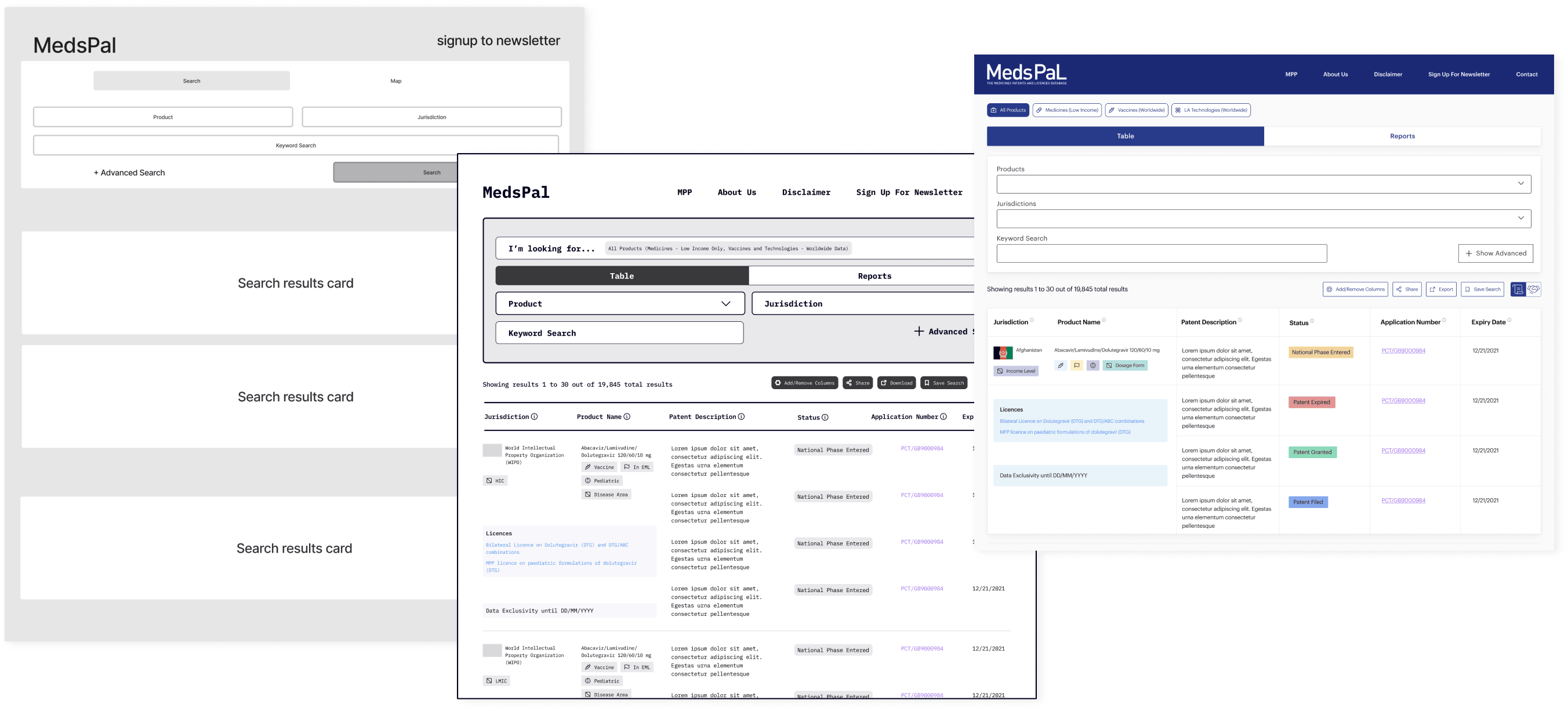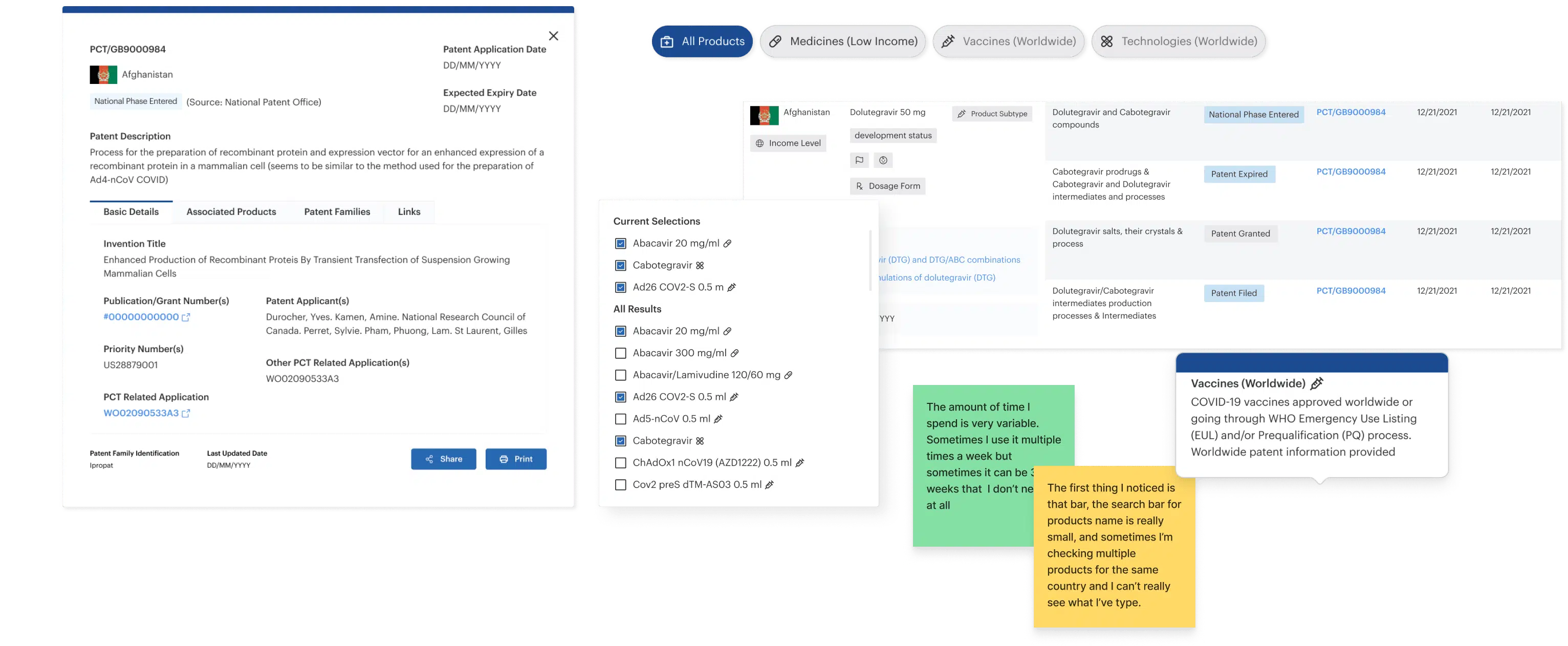
Increasing access to life-saving medicines
Platforms
Desktop, Mobile
Deliverables
Discovery, Product Strategy, UI,
UX, Design System, Development

Unlocking medication access in low-income regions
Medicines Patent Pool (MPP) is a non-profit organization that fights for access to healthcare in low and middle income countries by fighting legal patents that block access to lifesaving medication in court. A majority of their work involves making patent info on medications, vaccines, and other pharmaceutical products available to lawyers, advocates, and non-profits through MedsPal – a free resource that provides insight into the intellectual property status of specific patents. The database includes data on over 10,500 national patent applications for 135 life-saving meds in over 130 Lower Middle Income Countries.

Redesigning a life-saving medical database
Over the past year, MPP decided to revamp their site to improve the user experience and bring the interface up to date. To get started, we conducted a UX audit to identify any easy-to-fix usability issues that we could quickly redesign.
Since we didn’t have much information about how users were interacting with the site, we also conducted interviews with people from various organizations. We found that users appreciated the minimalistic design, but wanted more clarity in the table presentation and some improvements to the search bar and reporting tools.
In the redesign, we made the data table more visually appealing by adding some whitespace around the cells and tags for key information. We also added a saved search feature to allow users to easily return to their previous searches, as they mentioned they frequently check back for updates on their queries.

Prototyping and high fidelity wireframes
To see if our assumptions about an improved search panel and detailed reporting section were on track, we conducted usability tests using a low-fidelity prototype. From the testing, we determined that the search panel design was effective and needed to reconsider the reporting section because the information it presented wasn’t insightful.
Next, we fine-tuned the designs to high fidelity. This involved carefully designing the table to ensure that a large amount of information could be displayed above the fold and within the boundaries of a standard desktop screen without the need for horizontal scrolling. Every pixel mattered during this stage as we were trying to present a lot of information in a small space.


Building reports that users actually needed
Medspal offers two ways to view patent information: a table and a map. The map view is outdated and limited in the information it presents, and our users told us they’d like to see more information about the medications they’re searching for in the form of a detailed reports that they could share with colleagues and industry peers.
We initially designed and tested a solution using low-fidelity prototypes, but it didn’t go well. Users were confused by the data visualizations and said they were unclear. So, we had to go back to the interviews and review what our users told us to come up with some new data visualizations that the client hadn’t considered before.
We created a complex donut chart that showed a breakdown of patent information by region and added a timeline to give users a snapshot of a medication’s patent history over time. This made it much easier for users to understand the data, rather than having to dig through CSV files and use Excel to parse it themselves. The resulting report was more useful and relevant to the data on the back end.

Realigning the client’s expecations
The client was a bit nervous about the redesign process because their current product was such a vital part of their work and they didn’t want to lose any of its core features. But, we were able to help them reimagine their vision for the product and create a modern, easy-to-use database that can handle changes to the backend data structure as they add more patent information. We’re currently in the midst of developing MedsPal and are pumped to see it go live. We think it has the potential to raise the bar for patent data visualization and searchable databases.
